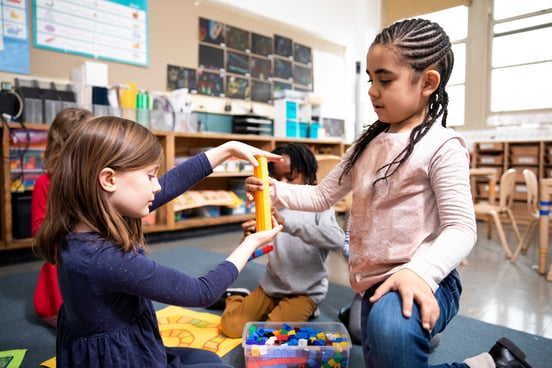
5 Easy Math Engagement Strategies for the Classroom
The news headlines are daunting. Math scores are down. School districts are scrambling to turn things around. And...
Alex Hopkins | Published April 02, 2020
As more schools close due to the unforeseen impact of the coronavirus, districts are coming up with unique ways to keep the learning going. Educators are being tasked with teaching students at a distance while also creating inventive assignments to keep their classes on track and complete this academic year.
First, we must consider the expectations we have of our students as we continue to practice social distancing during the COVID-19 outbreak. It’s important to be patient and allow some flexibility as the education scene moves out of the classroom and into the digital realm. Teachers, students, and parents alike are trying to navigate online options, get back on track with school assignments, and deal with a lack of resources all at the same time. Educators are facing additional challenges, including changing the way students are held accountable for their schoolwork.
While we must continue to assign students new projects and set realistic due dates, we must also take into account our students’ home environments and learning styles. Do they have siblings who also need parental assistance? Do they live in an English learner household? Are they sharing a computer with the rest of their family? Allow for some wiggle room—especially during these early stages—and offer them extra time and support when it’s needed to complete an assignment.
Depending upon your students’ access to the internet, you may choose to assign tasks digitally or provide them with printed materials. Studies have shown that online and printed assignments are equally beneficial to students’ self-efficacy, anxiety, and grades, so there’s no need to worry about your choice having negative effects on student performance.
Print. As long as you can establish a way for students to receive and submit printed classwork (for instance, a designated pick-up/drop-off schedule at your school campus), printed assignments can be helpful at the beginning of this transition while families settle into a new routine and share technological resources in the house.
Digital. Online learning platforms allow teachers to create virtual classrooms and provide a centralized location to assign classwork, share lessons, upload videos, communicate, host video conferences, and even keep track of participation and grades. They also provide a better opportunity for group projects and collaboration amongst classmates.
Whether you choose to go with digital or print assignments, we recommend that you assign a combination of smaller tasks and larger projects with ample time to complete, and send students a weekly “to do” list that specifies all current assignments and their due dates to keep everyone on track.
Ready for some assignment inspiration? Keep an eye out for Part 2 of this blog, where we’ll share ideas to help you prepare an array of engaging teacher- and student-led assignments during this time of distance learning.

The news headlines are daunting. Math scores are down. School districts are scrambling to turn things around. And...

Math assessment in California is changing. What used to be a compliance exercise or reporting tool is now becoming a...

You know the moment: a student’s eyes light up when the science experiment fizzes or the math puzzle helps them...